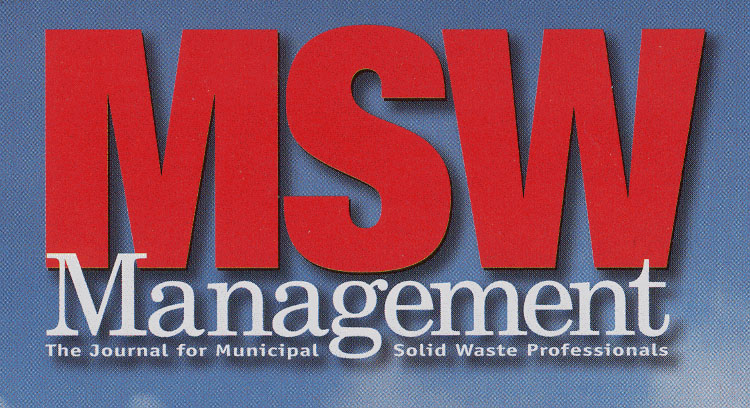NERC in the News
NERC Updates Recycling and Reuse Industry Study
 |
 |
NERC Recycling and Reuse Industry Study
Industry Valued at $35 Billion Five States, with Employment Topping 100,000
Scrap Tire News, March 2009
MSW Management, the Journal for Municipal Solid Waste Professionals, February 27, 2009
Recycling and reuse fuel a $35 billion annual industry in Delaware, Maine, Massachusetts, New York and Pennsylvania, according to a new study released by the Northeast Recycling Council, Inc. (NERC). The research, which updates NERC’s 2000 Recycling Economic Information (REI) Study, found that more than 11,000 recycling and reuse businesses employ over 100,000 individuals in the five-state region, and pay them wages that exceed $4.2 billion.
Reuse and recycling businesses also yield significant environmental benefits. Each year, recycling operations in the five states save the amount of energy needed to power almost two million households, and avoid 6.4 million tons of greenhouse-gas emissions – equivalent to taking close to 3 million cars off the road, according to an estimate by NERC based on the study’s findings.
This REI Update was prepared by DSM Environmental Services, Inc. and MidAtlantic Solid Waste Consultants on behalf of NERC and the five participating states. The research included several significant changes to the methodology that was used in the 2000 Recycling Economic Information Study to examine the economic impacts of the industry, said NERC Executive Director Lynn Rubinstein.
“The changes were designed to more accurately estimate the economic contribution of the recycling and reuse industry in the five participant states for the year 2007,” said Rubinstein. “Those changes also make it difficult to compare the studies to one another,” she added.
Some of the changes came in response to industry concerns regarding the methodologies used in the earlier report. The new study attempted to address those concerns. For example, Rubinstein explained, “the updated study reports economic data for the recycling industry separate from economic data for the establishments that purchase secondary materials from the recycling industry. These establishments were labeled “demand side” activities in the 2000 report and were included in “recycling industry” data. In the new study, the demand-side industries are listed separately as “recycling reliant” industries.” She added that “this separate category reflects the fact that, for example, a paper mill would commonly be thought of as part of the paper industry, which relies on a mix of recycled and virgin materials.”
In addition to this change, the new study allocates recycling economic activity only to the portion of the mill that uses recycled materials. For example, if a pulp mill uses an estimated average of 25 percent recycled fiber, then 25 percent of employment, payroll, and gross receipts is allocated to recycling.
The study update also reports on the indirect and induced economic impacts of the recycling industry on a sector-by-sector basis. However, unlike the 2000 report, the new study does not add the indirect and induced effects to the direct economic impacts to calculate the total contribution of the recycling, recycling reliant, and reuse and remanufacturing industries due to concerns about double counting.
The study divides recycling into 26 categories. Six of the categories represent the supply chain that provides recycled raw materials to manufacturers -- including municipal and commercial collection programs, sorting facilities, composting operations, scrap wholesalers, and plastics reclaimers. The study found that businesses that utilize recycling raw materials due so in lieu of “virgin” products that are often mined and manufactured outside of the region. As a result, these businesses create jobs closer to home and have a smaller environmental footprint than companies that rely on raw material extraction. In the five states, the research showed that there were 7,313 establishments working in this sector. This is 43% more workers than mining operations there, paying wages that were approximately 62% higher than those offered by mining jobs, according to U.S. Census figures.
The study identified 13 categories for businesses that manufacture new products with recycled materials. Using conservative methods to estimate the amount of manufacturing employment directly attributable to recycling, the study found that approximately 1,000 recycled-product manufacturers employ nearly 55,300 individuals, or around 4% of total manufacturing jobs in the five-state region according to the U.S. Census. Wages from this sector are comparable to those in the overall manufacturing sector, also according to U.S. Census figures.
Seven additional categories are devoted to the reuse sector. This sector is comprised of 3,079 businesses that employ 17,765 individuals, and have annual gross revenues that exceed $2 billion. “This is an emerging sector -- and one with great future potential,” noted Rubinstein.
The complete report is available on the NERC website.


